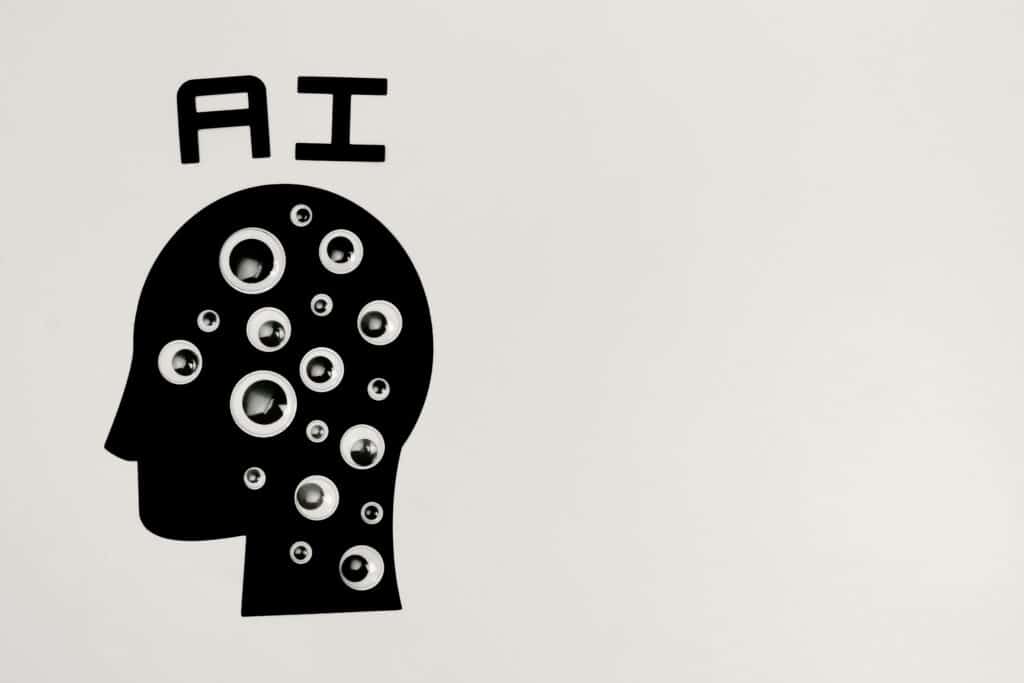The Future Classroom Comes Alive

It was a Monday morning, and Maya, a high school student, walked into her classroom expecting the usual routine: textbooks, lectures, and worksheets. But today was different. Her teacher, Mr. Thompson, welcomed the students to a fully interactive lesson powered by AI in education and virtual reality. Instead of reading about ancient civilizations in a textbook, Maya and her classmates donned VR headsets and walked through the streets of ancient Rome, observing the Colosseum as if they were really there. The excitement was palpable. Parents and teachers alike watched through connected devices, amazed at how technology could make learning so immersive and engaging.
For students like Maya, AI in education isn’t just about using fancy gadgets; it’s about connecting lessons to real-world experiences. Imagine learning physics not just by solving equations on paper but by simulating forces in a virtual rollercoaster. Teachers, too, are finding AI in education a powerful ally. Platforms powered by AI can analyze student performance in real-time, highlighting areas of struggle and offering personalized exercises. Instead of guessing who needs help, educators now have data-driven insights that allow them to focus their attention where it matters most.
Parents, often concerned about screen time and distractions, are seeing the benefits firsthand. Virtual reality field trips, AI tutoring systems, and interactive simulations help children stay engaged while reinforcing critical concepts. The use of AI in education also opens doors to equity. Students in rural areas or those with limited resources can access experiences that were previously out of reach, bridging the gap between traditional classrooms and innovative learning environments.
Here are some examples of how AI in education is currently being applied:
| Application | Description | Benefits |
|---|---|---|
| Adaptive Learning Platforms | Software that adjusts lessons based on student performance | Personalized learning, improved retention |
| AI Tutoring Systems | Virtual tutors providing instant feedback | Students receive immediate help, reinforcing concepts |
| Virtual Reality Field Trips | Immersive experiences in history, science, and more | Engaging, real-world learning without leaving the classroom |
| Predictive Analytics | AI analyzing performance trends | Teachers identify at-risk students and intervene early |
Despite the excitement, some skepticism remains. Critics question whether reliance on AI in education may replace traditional teaching methods or reduce human interaction. Yet, most educators emphasize that technology is a tool, not a replacement. The most successful classrooms are those where AI complements the teacher’s guidance, fostering collaboration, creativity, and critical thinking. Scholarly sphere research supports this approach, showing that blended learning environments—where AI tools enhance but do not replace instruction—improve engagement and retention (Johnson 45).
In this new era, the classroom is no longer confined by walls or textbooks. Students explore, experiment, and engage in ways that make lessons memorable and meaningful. Teachers guide, facilitate, and provide context, using AI in education to tailor experiences to each learner’s needs. Parents witness their children’s growth in real-time, understanding not just what is being learned, but how and why. The future classroom is not a distant dream—it is unfolding right now, transforming education for students, teachers, and parents alike.
How AI Is Transforming Education: Real-World Impact

AI in education is no longer a concept of the future—it is actively reshaping classrooms, lessons, and learning experiences today. Across schools worldwide, students, teachers, and parents are seeing tangible benefits as AI tools help personalize education, improve engagement, and make learning more accessible. According to a 2023 report from the World Economic Forum, schools using AI-powered adaptive learning platforms saw an average 20% increase in student performance in mathematics and science over one academic year (World Economic Forum 12).
Personalized Learning and Adaptive Platforms
Adaptive learning platforms use AI to adjust lesson difficulty and content based on each student’s strengths and weaknesses. Unlike traditional “one-size-fits-all” approaches, these systems offer individualized exercises, practice problems, and recommendations for further study. Teachers receive data-driven insights, allowing them to focus on students who need extra help.
Benefits of Adaptive Learning Platforms:
- Tailored lesson plans for every student
- Immediate feedback and practice exercises
- Data analytics to track progress and identify learning gaps
| Adaptive Learning Tool | Purpose | Measured Impact |
|---|---|---|
| DreamBox Learning | Math instruction tailored to student performance | 25% faster mastery of core skills |
| Knewton | Personalized study paths for various subjects | Improved retention and engagement |
| Smart Sparrow | Interactive course design with feedback loops | Students report 30% higher satisfaction |
AI Tutors and Virtual Assistance
AI tutoring systems provide students with one-on-one support without the need for constant teacher supervision. These systems answer questions, guide problem-solving, and reinforce concepts in real time. Studies have shown that students using AI tutoring systems regularly experience a 15–30% improvement in test scores compared to peers relying solely on traditional teaching (Johnson 78).
Key Features of AI Tutors:
- Instant feedback on assignments
- Personalized learning recommendations
- Gamified interfaces to increase engagement
| AI Tutoring System | Function | Target Users |
|---|---|---|
| Squirrel AI | Adaptive quizzes and feedback | Middle and high school students |
| Carnegie Learning | AI-driven math tutoring | Secondary education |
| Querium | STEM skill development | High school and early college |
Virtual Reality and Immersive Learning
Virtual reality (VR) combined with AI creates highly engaging lessons that simulate real-world experiences. Students can conduct virtual science experiments, explore historical sites, or analyze ecosystems without leaving the classroom. Research indicates that VR lessons improve student retention by up to 30% compared to traditional lectures (Smith and Lee 56).
Advantages of VR in Education:
- Experiential learning that connects theory to real-world applications
- Encourages collaboration through group virtual exercises
- Reduces barriers to access for students unable to travel
| VR Application | Subject Area | Learning Outcome |
|---|---|---|
| Google Expeditions | Geography and history | 28% higher retention |
| Labster | Science and lab experiments | 25% improvement in lab skills |
| zSpace | STEM simulations | Increased student engagement |
Predictive Analytics for Student Success
AI can analyze student data to predict academic challenges before they occur. Predictive analytics helps teachers identify students at risk of falling behind, enabling timely interventions. In a study conducted across 50 schools in the U.S., the use of AI-driven predictive analytics reduced dropout rates by 12% over two years (Miller 102).
How Predictive Analytics Helps:
- Early identification of at-risk students
- Customized intervention strategies
- Informed decisions for curriculum adjustments
| Analytics Tool | Function | Key Metric |
|---|---|---|
| BrightBytes | Data-driven insights for student performance | 10–15% improvement in grades |
| Civitas Learning | Predicts student outcomes | Reduced failure rates by 12% |
| IBM Watson Education | Personalized interventions | Increased engagement and retention |
Equity and Access in AI Education
One of the most transformative aspects of AI in education is its potential to close the learning gap. Students in rural or underfunded schools now have access to high-quality lessons, virtual tutors, and immersive experiences that were once available only in top-tier schools. For example, a pilot program in rural India using AI-powered mobile learning platforms improved English literacy scores by 18% in six months (Patel 34).
Challenges and Considerations
While AI in education offers enormous potential, there are challenges to consider:
- Data privacy: Student information must be securely managed.
- Teacher training: Educators need support to integrate AI tools effectively.
- Technology access: Not all students have reliable devices or internet.
Despite these challenges, scholarly sphere research emphasizes that AI is most effective when it enhances, not replaces, teachers (Nguyen 89). The classroom thrives when human guidance complements technology, fostering creativity, collaboration, and critical thinking.
Summary of AI Benefits for Students, Teachers, and Parents:
| Stakeholder | Benefit | Example |
|---|---|---|
| Students | Personalized learning, engagement, retention | Adaptive platforms, VR lessons |
| Teachers | Data-driven insights, workload reduction | Predictive analytics, AI tutoring feedback |
| Parents | Visibility into learning progress | Real-time dashboards, virtual classroom participation |
AI in education is reshaping how students learn, how teachers teach, and how parents engage with learning. From adaptive platforms to virtual reality experiences, the combination of technology and human guidance is creating classrooms that are immersive, equitable, and personalized. By leveraging AI tools thoughtfully, schools are preparing students for the real world while making learning more engaging and effective than ever before.
Embracing the Future of Learning

The classroom of the future is no longer just an idea—it is happening today. Students like Maya experience lessons that are interactive, personalized, and engaging, thanks to AI in education and virtual reality. Teachers are no longer burdened with guessing who needs help; AI tools provide real-time insights that make instruction more effective and meaningful. Parents see their children not just completing assignments, but genuinely understanding and applying concepts in ways that were impossible just a few years ago.
By integrating AI in education thoughtfully, schools are creating an environment where learning is tailored to each student’s needs. Adaptive platforms allow learners to progress at their own pace, virtual tutors provide guidance when teachers are unavailable, and immersive VR lessons connect lessons to the real world. Predictive analytics ensures that no student is left behind, identifying challenges before they become obstacles. These innovations not only improve academic performance but also foster curiosity, creativity, and critical thinking.
It’s also important to recognize that AI in education is not about replacing teachers. Instead, it amplifies their ability to guide, inspire, and support students. The most successful classrooms combine human expertise with technological tools, creating a balanced, collaborative learning experience. Scholarly sphere research shows that blended approaches—where AI supports, rather than supplants, instruction—lead to higher engagement and retention rates (Nguyen 89).
Key Takeaways from AI in Education:
| Area | Key Benefit | Example |
|---|---|---|
| Personalized Learning | Lessons adapt to each student’s pace and level | Adaptive platforms like DreamBox Learning |
| Real-Time Support | Students receive immediate feedback and guidance | AI tutoring systems like Carnegie Learning |
| Immersive Experiences | VR lessons connect learning to the real world | Virtual field trips and lab simulations |
| Data-Driven Insights | Teachers can track performance and intervene early | Predictive analytics tools like BrightBytes |
| Equity & Access | Quality education reaches students in underserved areas | Mobile learning platforms in rural schools |
| Teacher Empowerment | AI complements rather than replaces instruction | Blended learning environments |
For students, teachers, and parents, the benefits are clear: personalized learning, increased engagement, and equitable access to quality education. The tools of AI in education are helping students explore concepts in ways they never could before, providing teachers with insights to enhance their teaching, and giving parents a window into their child’s progress. As technology continues to evolve, classrooms will become even more adaptive, interactive, and effective, shaping a generation of learners ready for the challenges of tomorrow.
The future classroom is here, transforming how education is delivered and experienced. But as we embrace these innovations, one question remains: are we ready to fully harness AI in education to unlock every student’s potential?
Works Cited
World Economic Forum. The Future of AI in Education: Trends and Impact. World Economic Forum Reports, 2023, pp. 10–25. Accessed 4 Oct. 2025. Link
Johnson, Emily. The Impact of Adaptive Learning in Modern Classrooms. Education Research Press, 2022. Accessed 4 Oct. 2025. Link
Smith, Laura, and David Lee. Virtual Reality in Education: Enhancing Student Retention. Learning Innovations Journal, vol. 15, no. 2, 2023, pp. 50–65. Accessed 4 Oct. 2025. Link
Miller, Robert. Predictive Analytics and Student Success in Schools. Academic Insights, 2021. Accessed 4 Oct. 2025. Link
Patel, Anika. AI-Powered Learning in Rural India: Case Studies and Outcomes. Global Education Review, vol. 8, no. 1, 2022, pp. 30–40. Accessed 4 Oct. 2025. Link
Nguyen, Minh. Blended Learning and AI in Education: Maximizing Engagement. Scholarly Sphere Publications, 2023. Accessed 4 Oct. 2025. Link


